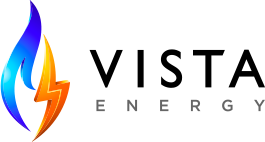Many of us may think that the reason why so much energy still comes from gas and power plants is a simple matter of economics: these fuels are cheap. But even if that was once true, that idea has been dispelled by recent declines in solar and wind prices over the past decade. The sun, in particular, reduces the cost of a broken leg. Just 10 years ago, this was the most expensive option for building a new energy development. Since then, the price has decreased by 90%, according to the data from the flat power rate report and as our World Amigo Energy Reviews has shown in recent data. Large solar panels are currently the cheapest option to build and operate. Wind energy has also seen dramatic declines – the lifetime cost of new wind farms has fallen 71% over the past decade.

A history of low prices
The sun has become cheap because of the so-called learning process and good cycles, the article explains. Access to solar energy used to be so expensive that it was used for satellites. In 1956, for example, the cost of one watt of solar power was $1,825. The initial demand for satellites gave rise to the so-called “virtuous cycle”. The more panels are made for satellites, the more their prices drop, and the more they are adopted for other niche purposes. As the cost continued to fall due to advances in technology and the rise of economies of scale, solar energy was finally able to make its debut as an all-powerful energy source. Since 1976, each doubling of solar energy has resulted in an average 20.2% increase in the cost of space.
Fossil fuels, by comparison, are unsustainable. Of course, fossil fuel companies must buy fossil fuels to operate. In coal-fired power plants, the purchase of coal accounts for about 40% of total expenditure. Both solar and wind are independent, therefore, the cost of operating their energy can be reduced significantly as technology improves and companies develop.
It is delayed in the green transition
Despite the sharp drop in prices, renewables have not replaced fossil fuels at the rate one would expect. The investments, policies, and infrastructure of the energy industry as a whole are heavily skewed toward fossil fuels.
Although it is cheaper to build renewable energy when considering new plants, this process will not affect the work of existing fuel plants. It is guaranteed that these resources have investors with a certain rate of return on their investment in energy resources, which guarantees continuous income and change for the operation of these plants. Although the true market price of their energy source will make their work expensive, these monopolies are organized in such a way that this is not an issue. The cost of building new generations is becoming increasingly competitive with the cost of adding additional capacity to existing fossil fuel infrastructure.
In addition to the large investment in fossil fuels, there is a lot of inertia in the system due to long-term contracts between companies, power producers, and mining companies. And since the country’s total energy does not increase significantly every year, there is no incentive to build renewable energy.
Aside from market power and ownership, there are other tangible barriers to renewable energy deployment. The sun and wind are not constant throughout the day or year, and sometimes the best places for electricity don’t have many people living there. The windy parts of the country – usually in rural areas like the Great Plains – have fewer people using this energy than coastal cities.

